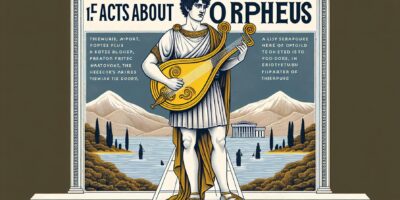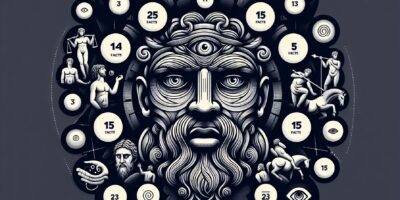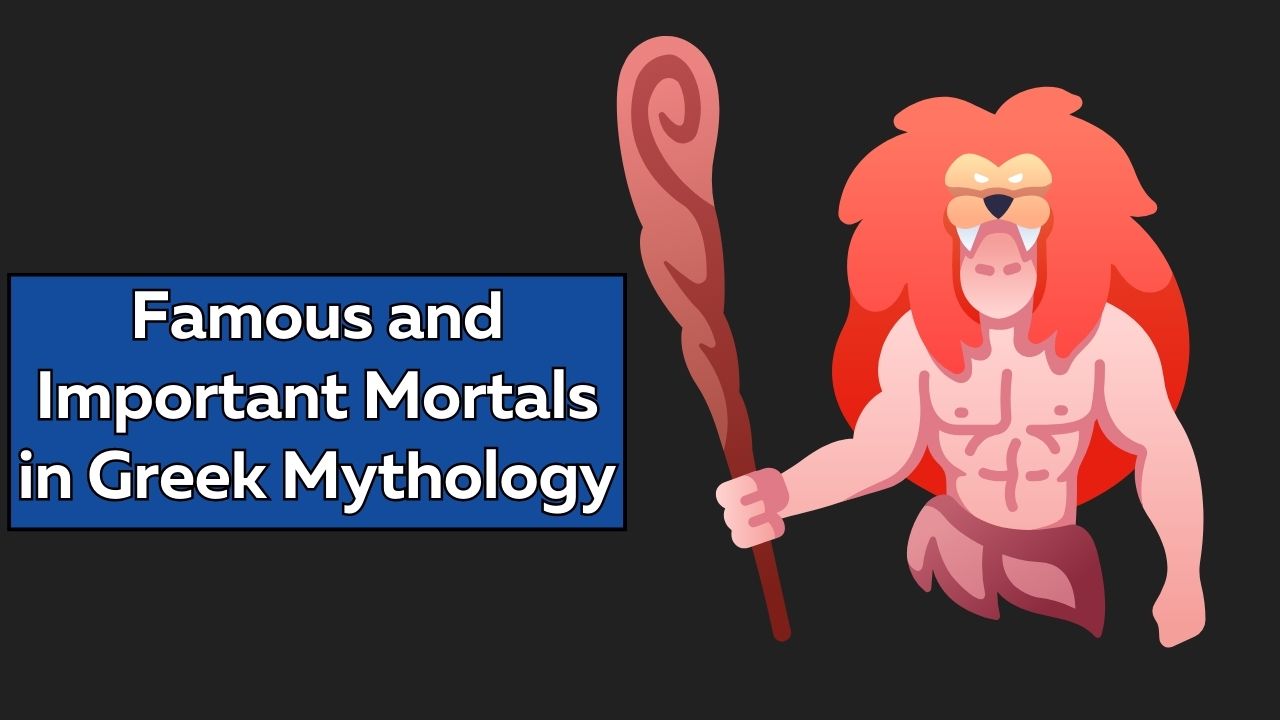In Greek mythology, Persephone is a central figure, known as the Queen of the Underworld and the goddess of spring growth. Her story is one of transformation, and her role in the pantheon is both complex and fascinating. In this article, we’ll explore 10 captivating facts about Persephone and the myths that surround her.
Introduction
Persephone, the daughter of Demeter (goddess of agriculture), and Zeus (king of the gods), is a deity whose story intertwines the cycles of nature and the afterlife. Her tale is a testament to the ancient Greeks’ understanding of the changing seasons, and it continues to be a source of inspiration and intrigue.
Fact 1: The Abduction Myth
Hades, Lord of the Underworld: The most well-known myth involving Persephone is her abduction by Hades, the god of the Underworld. He took her to his realm while she was picking flowers in a meadow. This event led to her becoming the Queen of the Underworld.
A Grief-Stricken Mother: Demeter, Persephone’s mother, was devastated by her daughter’s disappearance. Her grief led to the changing of seasons, with the earth becoming barren during the months when Persephone resided in the Underworld.
The Pomegranate Seeds: Persephone’s return to the world of the living was secured by eating six pomegranate seeds, which bound her to the Underworld for six months of the year, resulting in the changing seasons.
Fact 2: Persephone’s Dual Role
Goddess of Spring and the Underworld: Persephone’s dual nature makes her unique in Greek mythology. She is both the goddess of spring growth, responsible for the blossoming of flowers and crops, and the Queen of the Underworld, ruling alongside Hades.
Representing Transformation: Persephone’s role symbolizes the cyclical nature of life and death, making her a deity of profound transformation and rebirth.
Epithets and Symbols: Persephone is often referred to by various epithets, including Kore (meaning “maiden”) and Despoina (meaning “mistress”). She is symbolized by flowers, particularly the narcissus and pomegranate.
Fact 3: The Eleusinian Mysteries
The Most Sacred Rites: Persephone played a central role in the Eleusinian Mysteries, a set of secret religious rituals held annually in ancient Greece. These mysteries celebrated Demeter and Persephone and were believed to offer insight into the afterlife.
A Secret Tradition: The details of the Eleusinian Mysteries were closely guarded, and initiates were sworn to secrecy. The rituals provided a sense of hope and consolation about life after death.
Influence on Greek Culture: These mysteries had a significant impact on Greek culture and spirituality, enduring for centuries as one of the most revered religious traditions.
Fact 4: The Name Persephone
Meaning and Origins: The name Persephone is believed to have originated from the Greek word “pertho,” which means “to destroy” or “to bring death.” This etymology reflects her dual role as both a life-bringer and a ruler of the Underworld.
Alternative Names: In Roman mythology, Persephone was known as Proserpina. She was also associated with other goddesses, such as Isis in Egyptian mythology.
Different Pronunciations: The pronunciation of Persephone varies, with some opting for “per-SEF-uh-nee” and others choosing “per-SEF-oh-nee.”
Fact 5: Persephone’s Iconic Symbolism
Narcissus and the Changing Seasons: The story of Persephone’s abduction is often associated with the narcissus flower. According to Greek mythology, these flowers bloomed in abundance in the meadow where she was taken, and their withering symbolizes her departure to the Underworld.
The Pomegranate and Underworld Binding: The pomegranate, with its rich symbolism of both life and death, is a powerful representation of Persephone’s connection to the Underworld. The seeds she consumed underscore her dual existence.
A Sign of Fertility: Persephone’s role as a fertility goddess is evident in the growth of crops and vegetation when she returns to the world in the spring.
Fact 6: Persephone in Art and Literature
Depictions in Art: Persephone has been a popular subject in classical and Renaissance art. Her story has been depicted in countless paintings and sculptures, capturing the drama and emotions of her myth.
Literary Influence: Persephone’s myth has inspired many writers and poets throughout history. Her abduction and subsequent return to the world have been explored in numerous literary works.
Modern Interpretations: Contemporary literature and art continue to draw from Persephone’s story, finding relevance in its themes of transformation and the duality of life and death.
Fact 7: Persephone’s Role in Marriage
The Symbolism of Marriage: Persephone’s abduction by Hades is often seen as a symbolic representation of the transition from girlhood to womanhood and marriage. In this context, she is sometimes considered a patron of brides.
The Idea of Unions: Her story reflects the concept of unions between the divine and the mortal, which was common in Greek mythology. It also underscores the idea of change and adaptation in life.
The Power of Choice: Some interpretations of the myth highlight Persephone’s agency in choosing to eat the pomegranate seeds, signifying her willingness to rule alongside Hades.
Fact 8: Persephone’s Role in Initiations
A Guide to the Afterlife: In some interpretations, Persephone is seen as a guide for souls in the afterlife, leading them on their journey to the Underworld.
A Comforting Presence: Her dual role as both a goddess of life and death provides comfort to those facing the unknown, suggesting that life and renewal are intertwined with the mysteries of death.
Symbols of Hope: The pomegranate, which bound her to the Underworld, can also be viewed as a symbol of hope, as it represents the possibility of rebirth and renewal.
Fact 9: Persephone in Popular Culture
Modern Interpretations: Persephone’s story continues to inspire contemporary literature, film, and television. Her character appears in various forms in works like Neil Gaiman’s “The Sandman” comics and the book “The Song of Achilles” by Madeline Miller.
Reimagining Myths: These modern interpretations often explore the complexities of her character and her relationships with other gods and goddesses.
Archetypal Significance: Persephone’s story remains a rich source of archetypal symbolism, allowing for diverse and innovative reimaginings.
Fact 10: Persephone’s Ceremonial Worship
Demeter and Persephone Cults: Worship of Persephone and her mother Demeter was prevalent in ancient Greece. Special ceremonies and festivals were held in their honor.
Thesmophoria Festival: The Thesmophoria, an exclusively female festival, celebrated the roles of Demeter and Persephone. It included rituals, sacrifices, and sacred processions.
Women-Only Worship: Many of these cults and festivals were restricted to women, emphasizing the connection between the goddesses and the cycles of fertility.
Conclusion
Persephone’s story is a captivating blend of beauty, transformation, and mystery. As the goddess of spring and the Queen of the Underworld, she embodies the eternal cycle of life, death, and rebirth. Her myth continues to resonate in modern culture, inspiring artists, writers, and seekers of deeper understanding. From the symbolism of flowers to the rituals of the Eleusinian Mysteries, Persephone’s influence endures, reminding us of the profound interconnectedness of nature and the human experience.







Leave a Reply